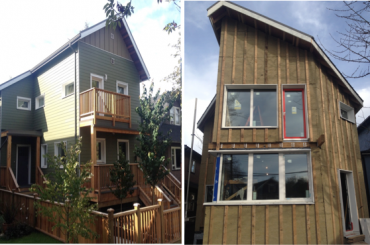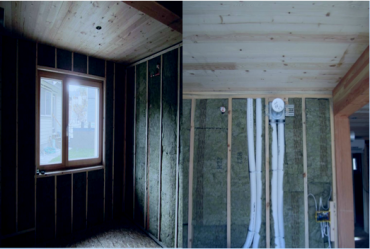
By Joseph Hough
Towards the Passive House: A short history of energy-efficient housing in Canada (Part 5 of 5)
Canadian ContractorAlexander Maurer, a Passive House and NZE consultant in Vancouver, wonders why Canada didn't become a world leader in extremely efficient residential building, given our early lead with the Saskatchewan Conservation House as far back as 1977.
This is the 5th and final part of our series on Passive Houses in Canada.
To read the previous part 4, click here.
Mr. Alexander Maurer, the principal at Marken Design + Consult in Vancouver, which specializes in Passive House and Net Zero projects, says that Canada should have become a world-leader in energy-efficient residential construction given our country’s early (1977) success with the Saskatchewan Conservation House.
“Canada should have been in a better energy-efficiency position when it comes to building, given the legacy of early energy conservation projects in North America,” Mr. Maurer said. “I believe the main reason for the success of Passive Houses in Europe as opposed to Canada is the price of fossil fuels. The Passive House standard may not be the ideal solution for every house but more energy-efficiency is a must in every building endeavour.”
Most European countries offer real incentives to people building Passive Houses. “The price of triple-glazed windows in Europe is much the same as double-glazed windows,” notes Mr. Maurer.

An impressive design and external insulation by Marken Design + Consult for a house in Vancouver, East Side
Mr. Maurer adds that, where he comes from in Austria (a state called Vorarlberg), there are some real incentives that encourage Passive House building.
“For instance, a 0.5 per cent interest home loan is directly linked to the size of the house, its energy-efficiency details, green products used and the income and the size of the family,” he says. “If you have a single gross income equivalent to $4,400, or a combined family income equivalent to $7,500, and your home’s primary energy demand doesn’t exceed 150 kilowatt-hour per meter square of usable area, you could qualify for a loan. The loan allocates a certain amount of dollar value to each of these former parameters (among other parameters). Let’s assume that you’re a family of four, and you’re building a 1,400 square foot house, you would qualify using these parameters for a mortgage that is equivalent to $122,000, starting with 0.5 per cent interest, and a mortgage term of 35 years.”

The interior design of the same house by Marken Design + Consult in Vancouver, East Side
Mr. Maurer points out that construction professionals and tradespeople are much more trained (and retrained) in Europe than in North America. Also, the cross-laminated timber (CLT) and prefabricated houses are more common in Europe. “The right professionals and tradespeople are the key to successful energy-efficiency,” he asserts.
“When we at Marken Design + Consult designed the first Canadian passive house in Whistler, in British Columbia, we had to import many components. Now we’re starting to find Canadian products like CLT, windows, heat pumps, etc. I think that the HRV systems are the only exception that still comes from Europe.”
This concludes our 5 part series on Passive Houses in Canada.
If you wish to reach author Joseph Hough directly, please email, efficientcarpenter@gmail.com.

Leave a Reply